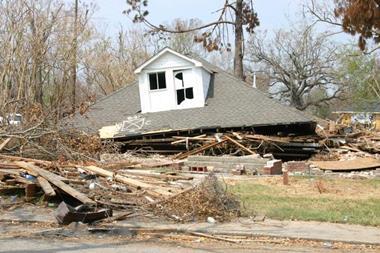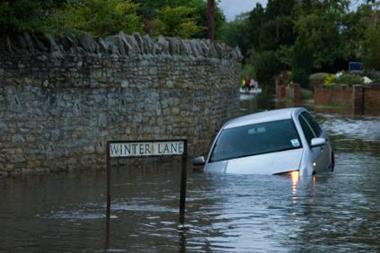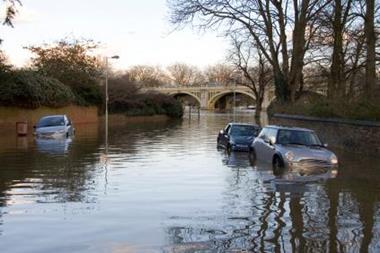Graham Orriss says the recent flooding across the UK has highlighted how the industry can improve its response strategy
It seems unlikely that the recent floods which devastated parts of Yorkshire and the Midlands are one-offs. Expert sources tend to agree that such incidents will become more, not less, common.
Our flood defences are not thought to be particularly robust, and recent research by the Benfield UCL Hazard Research Centre indicates that up to 69% of the UK’s 5,000 dams are potentially unsafe.
Add to this the fact that the recent floods have affected a far wider area and have been more sustained than previous occurrences. Media reports suggest that 27,000 domestic and 5,000 commercial properties have been hit and the ABI estimates that the cost will run into the hundreds of millions.
What lessons can we as an industry learn from the initial response to these floods? And how can we work with insurers and their policyholders to ameliorate the situation - both for those affected now and for future victims?
The priority is to get people back in their homes and businesses with minimum delay and no needless costs. The major complaint emerging from the towns and villages in Yorkshire and the Midlands is that the initial response has been too slow.
As disaster recovery experts, we generally get called in by the loss adjuster once it has made an assessment of what’s required.
Managing customers’ expectations is necessary, of course, but a loss adjuster working with a quality restoration company will be able to provide accurate timescales for the completion of the initial drying and cleaning processes.
Good administrative procedures and reliable, quality local resources are essential to ensure continuity and ongoing management of the huge number of simultaneous jobs.
Equally, investing in the technology and resources that will speed up drying or cleaning will become a necessity in our sector.
The ability to dry multiple properties at the same time is a crucial benefit. It costs no more to dry five houses using a speed drying system than it does to dry just one.
This has two major advantages. Firstly, it cuts costs for the insurer and secondly, as these systems run independently from the properties’ electrics, they can be deployed immediately.
A slightly less critical benefit is that it helps prevent “neighbour-envy”, where a row of identical houses have very different drying experiences using more traditional methods.
In the past, the loss adjuster’s role automatically extended to recommending the best local contractors – suppliers of drying, cleaning and building. However, the trend towards centralised procurement has lessened this involvement and, in my opinion, led to further delays in dealing with the current flooded properties.
I believe we’ll see a reversal of this trend if incidences of widespread but localised flooding persist. It is equally likely that we will see a return of specialist restoration com-panies, with local coverage and contacts.
In such situations, the market for all suppliers will be squeezed and the ability to quickly tap into the best available in the region will be invaluable to insurers as they realise the costs of delay and sub-standard work.
The knock-on effects of poor service for insurers could be considerable. It is, after all, their call centres and claims handling departments that will be called and blamed. Will the increase in flood activity herald a return to quality as a key yardstick when sourcing suppliers?
In certain sectors of the industry, such as high net worth and specialist commercial, quality has always been the watchword. But it is possible that we will start to see a trickle down effect to less exclusive policies.
Indeed, a number of the high net worth insurers are extending the quality promise of their traditional policies to the mid net worth market. The alternative, of course, is for a much greater complaints handling resource.
Talking to loss adjusters and others in our industry, I believe the single most important lesson to emerge from the initial stages of these recent floods is the need for speed: for getting the loss adjusters on site, for swift assessment and for drying the properties in an appropriate manner.
If these critical mile-stones happen quickly then the best cleaners and builders are more likely to be available and the jobs will be completed to schedule.
If they do not happen quickly, then the knock-on effects in terms of supplier squeeze, additional costs for alternative accommodation and the potential for complaint, could be considerable. IT
Graham Orriss is managing director of The Revival Company



































